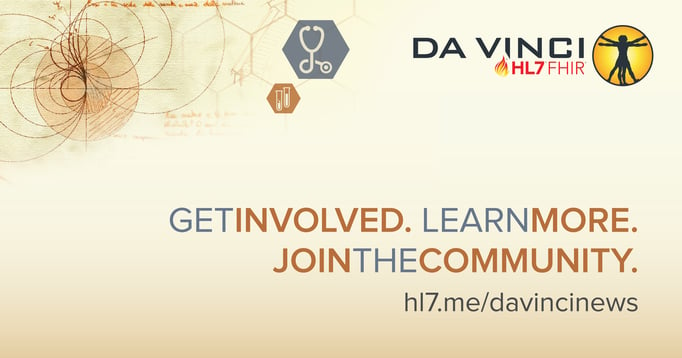
Much Progress Made on This and Other Da Vinci Project Use Cases During Recent FHIR Connectathon
The HL7 Da Vinci Project’s Gaps in Care use case continues to make rapid progress in developing a Fast Healthcare Interoperability Resources (FHIR®)-based solution to help payers, providers and patients improve care quality under value-based care scenarios.
Several issues were addressed during last month’s Virtual FHIR Connectathon, and the hope is that an implementation guide update for the standard will be balloted in September stated Viet Nguyen, MD and Yan Heras, who are leading the work on the use case. The progress and work on the Gaps in Care use case exemplifies work done on several Da Vinci Project use cases during the Connectathon.
Then, further refinement will be necessary over time before the standard becomes normative, following the process used to fine-tune standards for use in the industry.The initiative aims to build a standard that’s able to help industry participants determine the care that a patient, or a subset or group of patients, needs to meet quality standards and ensure that patients receive appropriate and effective care.
Providers and payers are paying more attention to care quality measures, especially as they are becoming electronic. Previously, managing these measures was challenging because they were difficult to capture and managed only with manual processes. However, Nguyen noted that it can be computable with electronic clinical quality measures (eCQM). With FHIR, there is the potential for payers and providers to have patient data on a FHIR server that then can be queried and matched against quality measures.
A Gaps in Care use case can bring some order to an otherwise complex set of information, which often is fragmented, with patients, providers and payer knowing only pieces of the total picture.
“With Gaps in Care, a provider can ask a payer what quality measures are still open for a patient or a group of patients,” Nguyen said. “Using a report, they can take that information into their system and can initiate all the outreach. Because any one patient can have a lot of measures, it makes it easier for providers to know all the gaps for that patient. Or a patient may be a brand-new member for a payer, which may think there’s a test that the patient needs; if I can send the payer the information that the test has been done, the payer can close the gap administratively. It benefits everyone because the patient gets the right screening at the right time, and we share that information to make it a closed loop.”
At the Virtual FHIR Connectathon, those working on the Gaps in Care use case were able to work on some technical challenges regarding the use of filters that are used to return results for queries. The ability to fine-tune queries and responses is essential in the complex interchange needed to accurately communicate potential gaps in patient care via FHIR-based queries.
Work will continue virtually during the summer, Nguyen said, using essentially the same format as the most recent Connectathon. “We’re going to continue to work asynchronously, on different scenarios.”
The hope is that Gaps in Care will be balloted as an update to the Data Exchange for Quality Measures Implementation Guide. “We want to try and make sure we get all the core functionality into the first implementation guide – there are a lot of exceptions and workarounds to accommodate,” Nguyen said.
Get Involved Today!
Click here to see upcoming Da Vinci events.
To learn more and join the community, visit hl7.me/davincinews.


